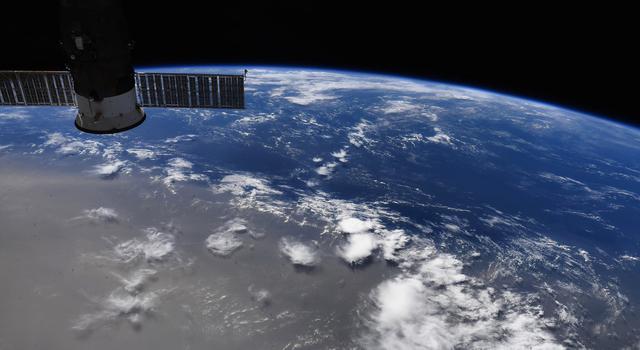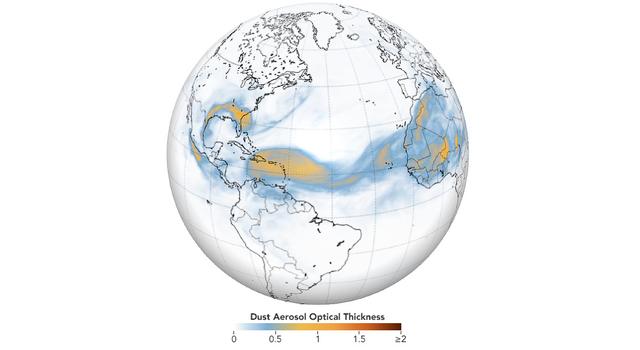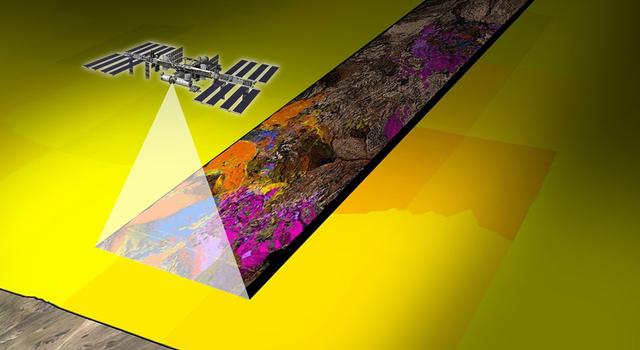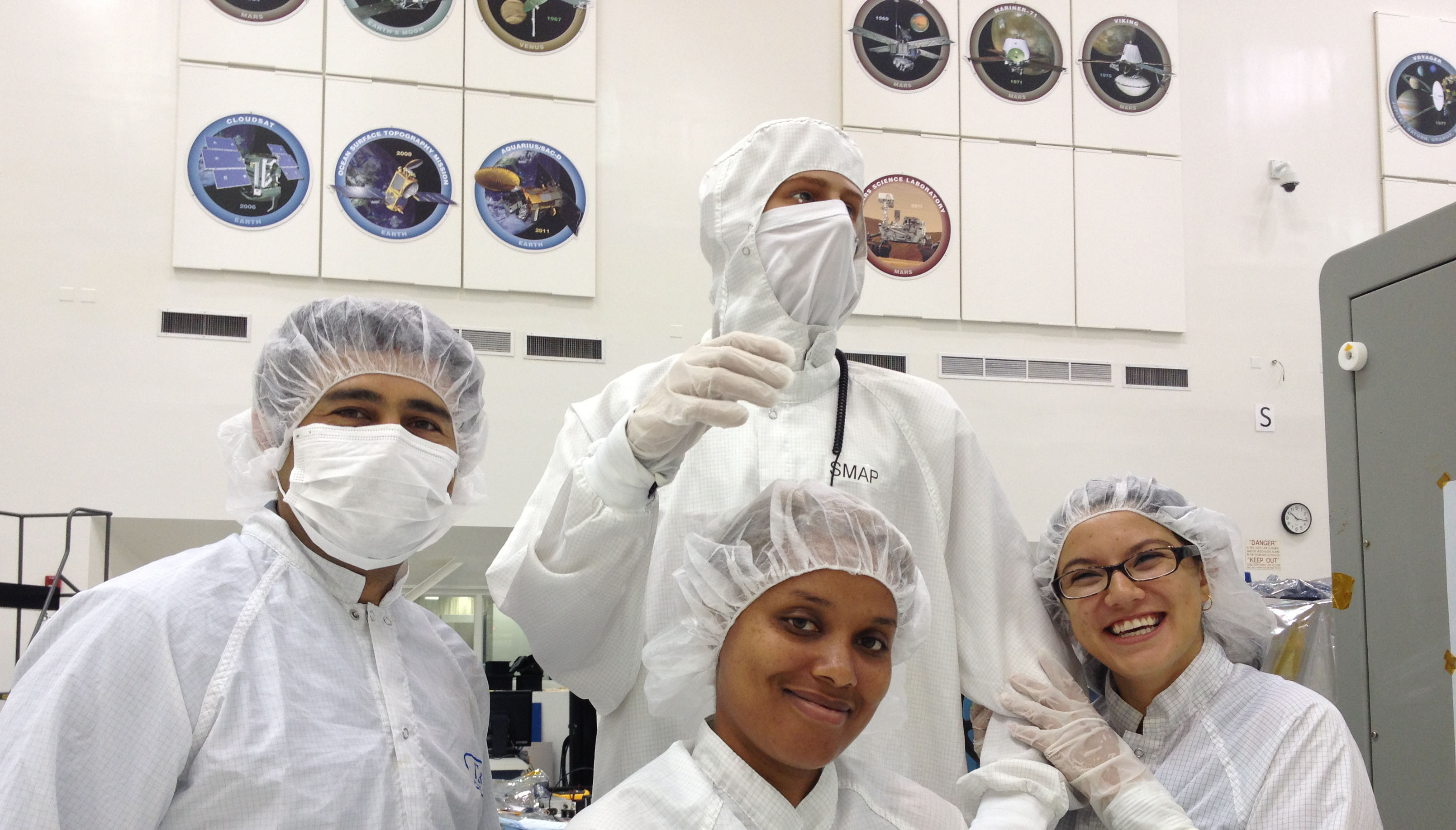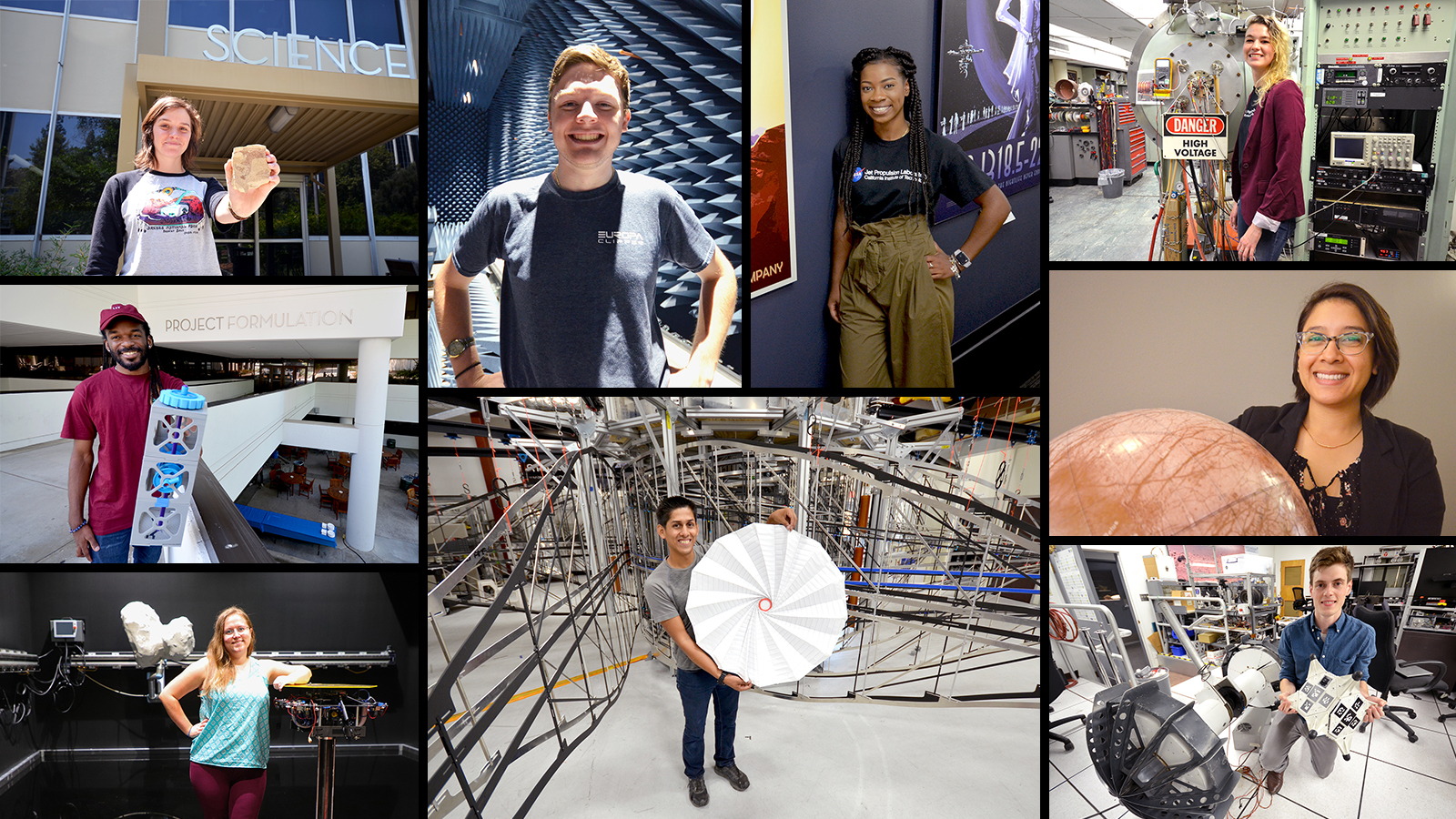Teachable Moments | May 2, 2022
How NASA Plans to Dig Up the Dirt on Climate Change
Learn about the role that dust plays in Earth's climate, why scientists are interested in studying dust from space, and how to engage students in the science with STEM resources from JPL.
A NASA instrument launched to the International Space Station this summer will explore how dust impacts global temperatures, cloud formation, and the health of our oceans. The Earth Surface Mineral Dust Source Investigation, or EMIT, is the first instrument of its kind, designed to collect measurements from space of some of the most arid regions on Earth to understand the composition of soils that generate dust and the larger role dust plays in climate change.
Read on to find out how the instrument works and why scientists are hoping to learn more about the composition of dust. Then, explore how to bring the science into your classroom with related climate lessons that bridge physical sciences with engineering practices.
Why It’s Important
Scientists have long studied the movements of dust. The fact that dust storms can carry tiny particles great distances was reported in the scientific literature nearly two centuries ago by none other than Charles Darwin as he sailed across the Atlantic on the HMS Beagle. What still remains a mystery all these years later is what that dust is made of, how it moves, and how that affects the health of our planet.
For example, we now know that dust deposited on snow speeds up snow melt even more than increased air temperature. That is to say, that dust traveling to cold places can cause increased snow melt.
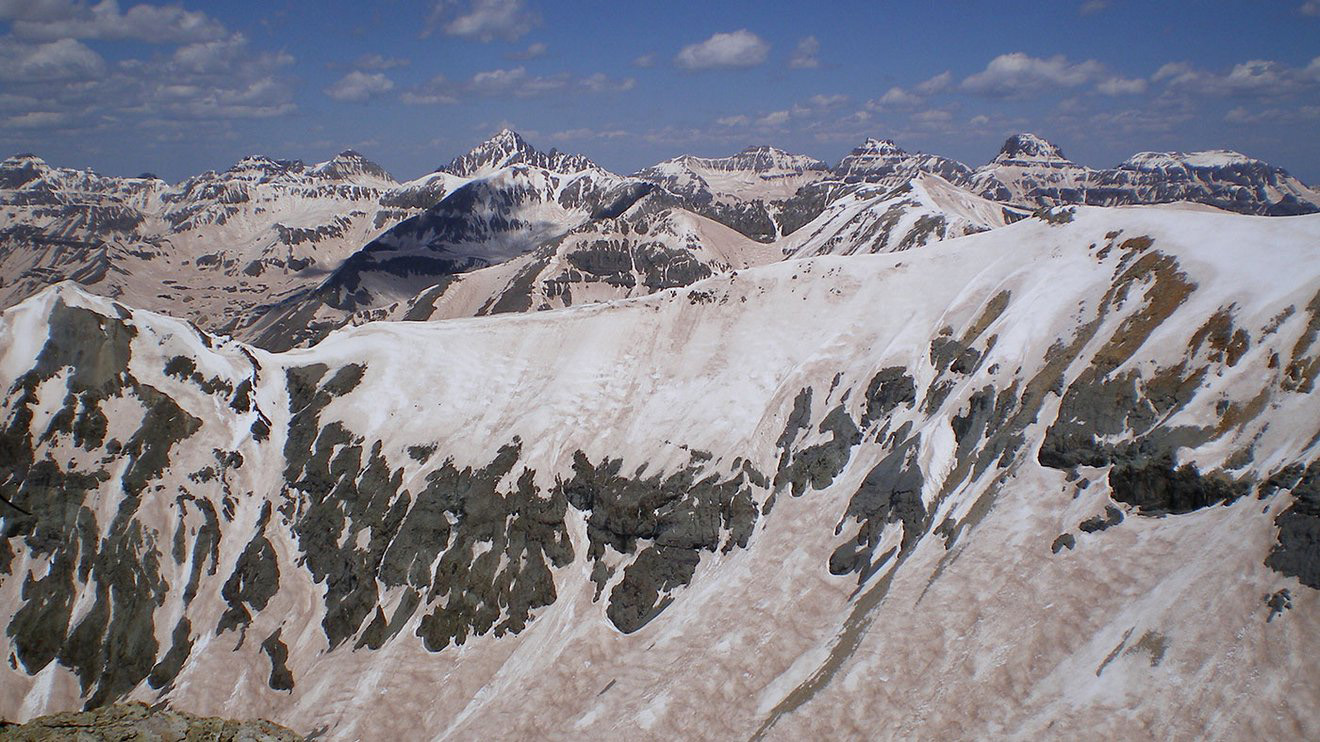
A coating of dust on snow speeds the pace of snowmelt in the spring. Credit: NASA | + Expand image
Dust can affect air temperatures as well. For example, dust with more iron absorbs light and can cause the air to warm, while dust with less iron reflects light and is responsible for local cooling. Iron in dust can also act as a fertilizer for plankton in oceans, supplying them with nutrients needed for growth and reproduction.

A plume of dust is shown emanating from over Alaska's Copper River in October 2016 in these images captured by the Moderate Resolution Imaging Spectroradiometer, or MODIS, instrument on NASA’s Terra and Aqua satellites. Dust storms play a key role in fueling phytoplankton blooms by delivering iron to the Gulf of Alaska. Credit: NASA | › Full image and caption
Floating dust potentially alters the composition of clouds and how quickly or slowly they form, which can ultimately impact weather patterns, including the formation of hurricanes. That’s because clouds need particles to act as seeds around which droplets of moisture in the atmosphere can form. This process of coalescing water particles, called nucleation, is one factor in how clouds form.
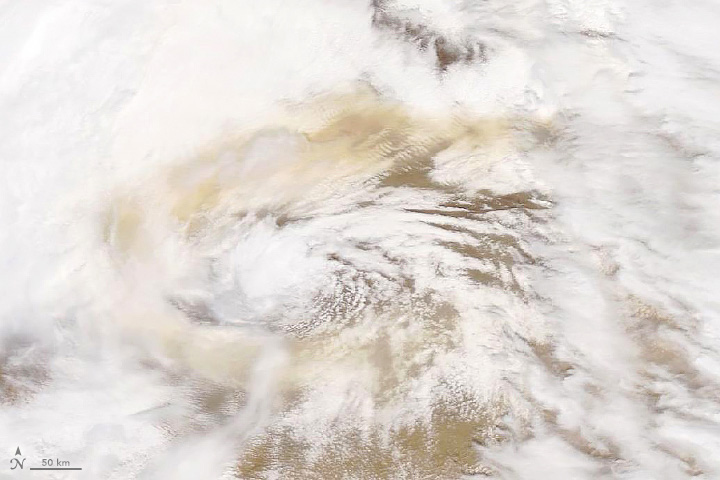
A swirl of dust mixes with the clouds in a low-pressure storm over the Gobi desert between Mongolia and China. This image was captured by the MODIS instrument on the Terra satellite in May 2019. Credit: NASA | › Full image and caption
Thanks to EMIT, we’ll take the first steps in understanding how the movements of dust particles contribute to local and global changes in climate by producing “mineral maps”. These mineral maps will reveal differences in the chemical makeup of dust, providing essential information to help us model the way dust can transform Earth’s climate.
› Learn more about what EMIT will do from JPL News
How It Works
NASA has been exploring how dust moves across the globe by combining on-the-ground field studies with cutting-edge technology.
Dr. Olga Kalashnikova, an aerosol scientist at NASA's Jet Propulsion Laboratory and a co-investigator for EMIT, has been using satellite data to study atmospheric mineral dust for many years, including tracking the movements of dust and investigating trends in the frequency of dust storms.
As Dr. Kalashnikova describes, “From the ground, we can see what types of dusts are lifted into the atmosphere by dust storms on a local scale, but with EMIT, we can understand how they differ and where they originally came from.”
EMIT is the first instrument designed to observe a key part of the mineral dust cycle from space, allowing scientists to track different dust compositions on a global scale, instead of in just one region at a time. To understand dust’s impact on Earth’s climate, scientists will use EMIT to answer key questions, including:
- How does dust uplifted in the atmosphere alter global temperatures?
- What role do dusts play in fertilizing our oceans when they are deposited?
- How do dust particles in the atmosphere affect cloud nucleation; the process by which clouds are ‘seeded’ and begin to coalesce into larger clouds?

The EMIT instrument will fly aboard the International Space Station, which orbits Earth about once every 90 minutes, completing about 16 orbits per day. Credit: NASA | + Expand image
To achieve its objectives, EMIT will spend 12 months collecting what are called “hyperspectral images” of some of the most arid regions of our planet selected by scientists and engineers as areas of high dust mobility, such as Northern Africa, the Middle East, and the American Southwest.
These images are measurements of light reflected from the Earth below, calibrated to the distinct patterns, or spectra, of light we see when certain minerals are present. The EMIT team has identified 10 minerals that are most common, including gypsum, hematite, and kaolinite.
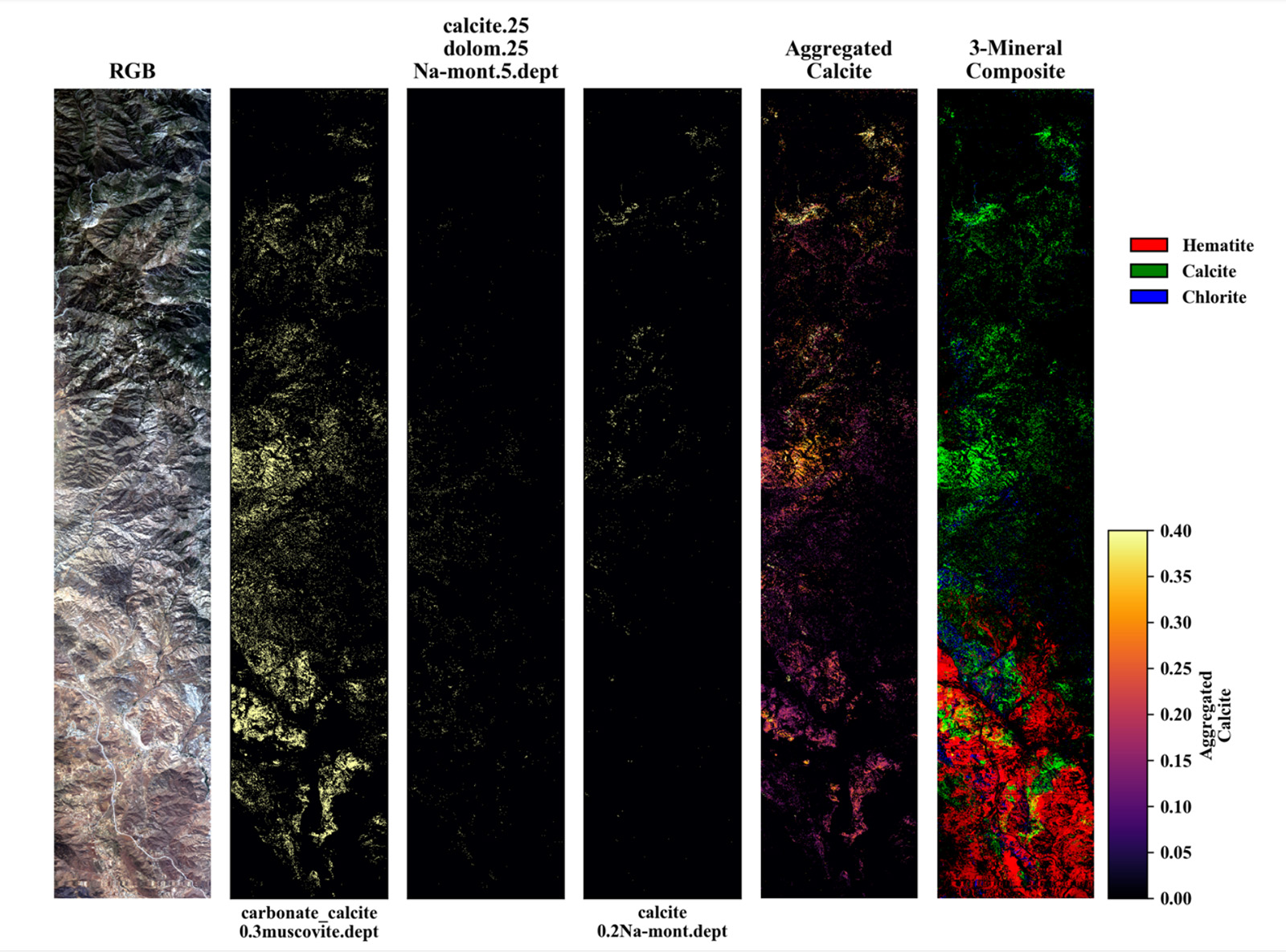
This example spectra shows how scientists will be able to identify different concentrations of minerals and elements in data collected by EMIT. Credit: NASA/JPL-Caltech | + Expand image
Why are these minerals important? One key reason is the presence or absence of the element iron, found in some minerals but not others.
Dr. Bethany Ehlmann is a planetary scientist and co-investigator for the EMIT project at Caltech and explains that when it comes to heating, “a little bit of iron goes a long way.” Iron in minerals absorbs visible and infrared light, meaning that even if only a small amount is present, it will result in a much warmer dust particle. Large amounts of warm dust in our atmosphere may have an impact on temperatures globally since those dust particles radiate heat as they travel, sometimes as far as across oceans!
Collecting images from space is, of course, no easy task, especially when trying to look only at the ground below. Yet it does allow scientists to get a global picture that's not possible to capture from the ground. Field studies allow us to take individual samples from tiny places of interest, but from space, we can scan the entire planet in remote places where no scientist can visit.
Of course, there are some complications in trying to study the light reflected off the surface of Earth, such as interference from clouds. To prevent this problem, the EMIT team plans to collect data at each location several times to ensure that the images aren’t being obscured by clouds between the instrument and the minerals we’re looking for.
The data collected by EMIT will provide a map of the compositions of dust from dry, desert environments all over the world, but the team involved won’t stop there. Knowing more about what the dust is made of sets the stage for a broader understanding of a few more of the complex processes that make up our global climate cycle. Upon completion of this study, EMIT's mineral maps will support further campaigns to complete our global dust picture. For example, NASA hopes to couple the data from EMIT with targeted field campaigns, in which scientists can collect wind-blown dust from the ground to learn more about where dust particles move over time and answer questions about what types of dust are on the go.
Furthermore, missions such as the Multiangle Imager for Aerosols, or MAIA, will allow us to better understand the effects of these dust particles on air-quality and public health.
Teach it
Studying Earth’s climate is a complex puzzle, consisting of many trackable features. These can range from sea level to particles in our atmosphere, but each makes a contribution to measuring the health of our planet. Bring EMIT and NASA Earth Science into your classroom with these lessons, articles, and activities to better understand how we’re exploring climate change.
Educator Guides
-
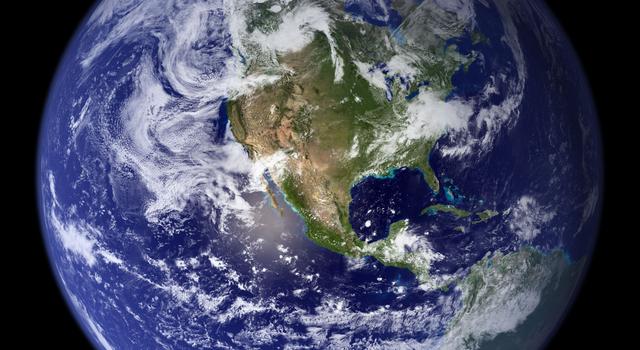
Ocean World: Earth Globe Toss Game
Students use NASA images and a hands-on activity to compare the amounts of land and surface water on our planet.
Subject Science
Grades K-6
Time Less than 30 mins
-
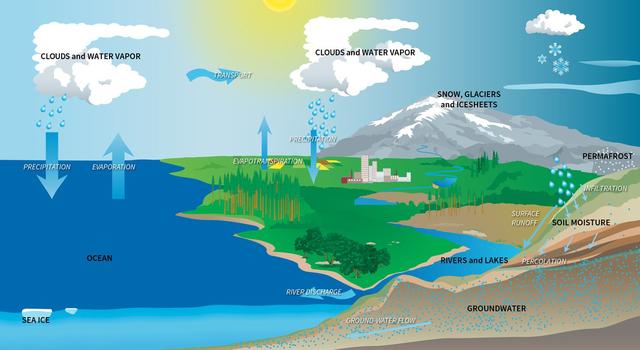
Modeling the Water Budget
Students use a spreadsheet model to understand droughts and the movement of water in the water cycle.
Subject Science
Grades 5-8
Time 30-60 mins
-
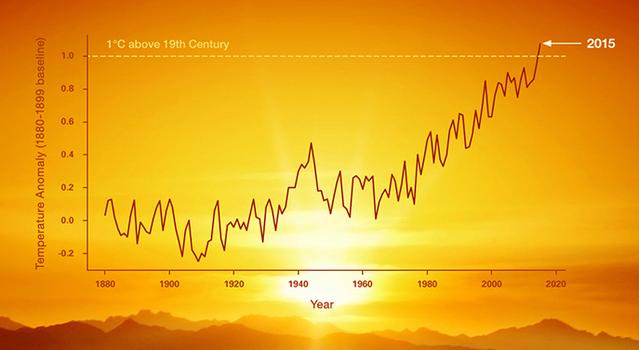
Graphing Global Temperature Trends
Students use global temperature data to create models and compare short-term trends to long-term trends.
Subject Math
Grades 5-12
Time 1-2 hrs
-
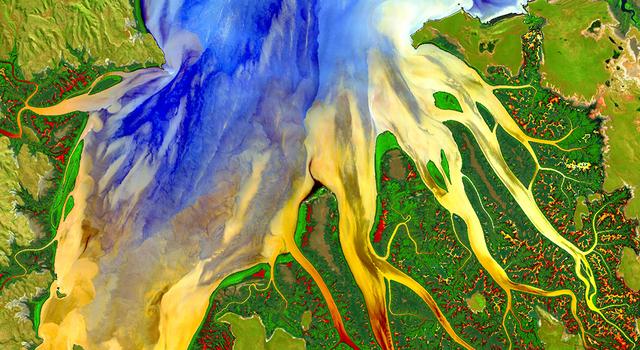
Using Light to Study Planets
Students build a spectrometer using basic materials as a model for how NASA uses spectroscopy to determine the nature of elements found on Earth and other planets.
Subject Science
Grades 6-11
Time > 2 hrs
-

Cloud Computing: A 'Pi in the Sky' Math Challenge
In this illustrated math problem, students use pi to calculate how much water could be contained within a cloud.
Subject Math
Grades 6-12
Time Less than 30 mins
-
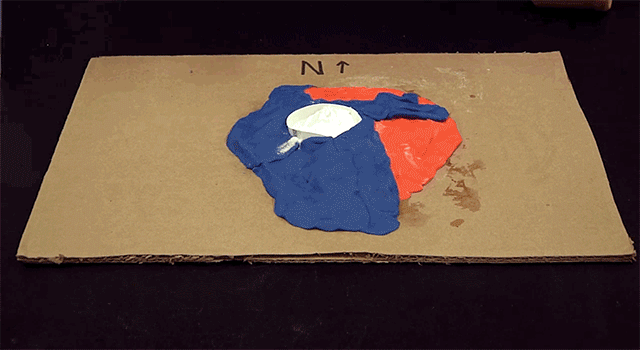
More Earth Science Lessons for Educators
Explore a collection of standards-aligned STEM lessons for students that get them investigating Earth science along with NASA.
Student Activities
-

The Types of Clouds and What They Mean
Learn about cloud types and how they form. Then help NASA scientists studying clouds.
Subject Science
Grades K-3
Time 30-60 mins
-

Make a Cloud in a Bottle
Have you ever wondered how clouds form? In this activity, you can make your own cloud to see for yourself!
Subject Science
Grades 4-12
Time < 30 mins
-

Video Series: NASA's Earth Minute
Learn about the science behind climate change and the NASA missions studying it in these short videos.
Subject Science
Grades 2-12
Time < 30 mins
-
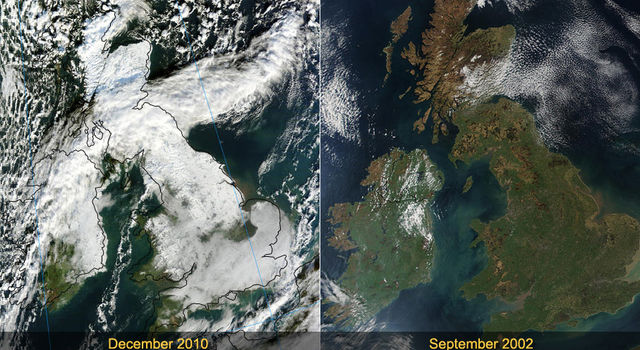
The Change of Seasons: Views from Space
See how seasonal changes affect our planet.
Subject Science
Grades 2-12
Time < 30 mins
-

More Earth Science Activities for Students
Explore Earth science with these projects, videos, and slideshows for students.
Articles
-
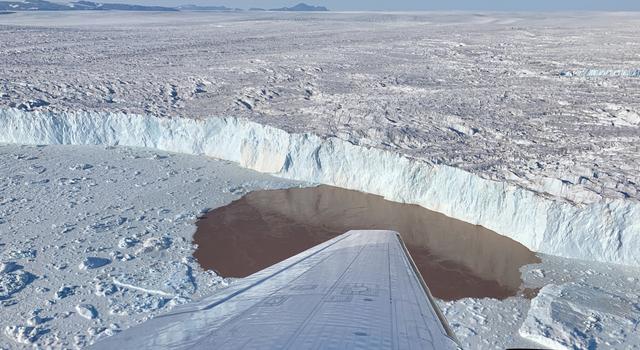 Teachable Moments
Teachable MomentsReflecting On Greenland’s Melting Glaciers as OMG Mission Concludes
Explore how the OMG mission discovered more about what's behind one of the largest contributors to global sea level rise.
-
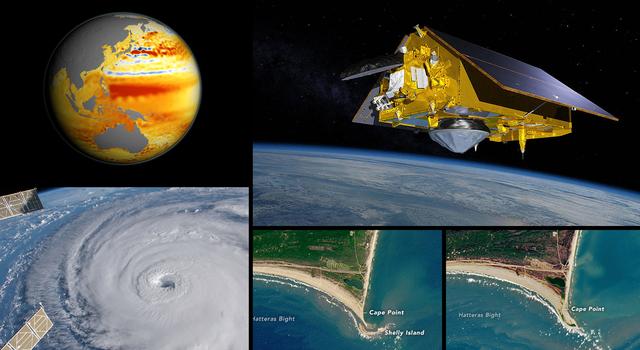 Teachable Moments
Teachable MomentsEarth Satellite Joins NASA Fleet to Monitor Sea Level, Improve Weather Forecasts
Learn about the mission and find out how to make classroom connections to NASA Earth science – plus explore related teaching and learning resources.
-
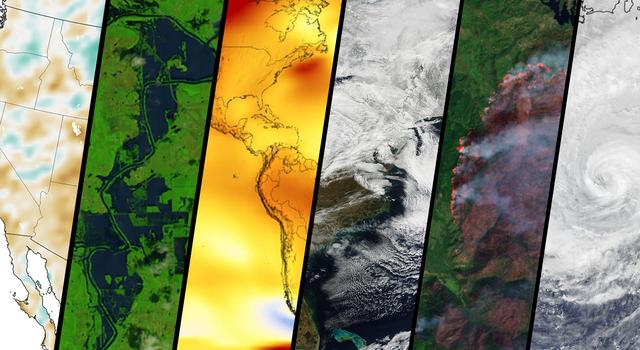 Teachable Moments
Teachable MomentsClimate Change Collection
Explore this collection of Teachable Moments articles to get a primer on the latest NASA Earth science missions, plus find related education resources you can deploy right away!
Websites
- NASA Climate Change
- NASA Earth Observatory - Images of Dust and Haze
- NASA Climate Kids
- Recursos En Español: NASA Climate Change
TAGS: Earth, climate, geology, weather, EMIT, Teachers, Classroom, Lessons, Earth Science, Climate Change, Dust, Global Warming, Educators, K-12, Teachable Moments, Climate TM
Teachable Moments | October 18, 2019
NASA's Eyes on Extreme Weather
In the News
An extreme weather event is something that falls outside the realm of normal weather patterns. It can range from superpowerful hurricanes to torrential downpours to extended hot dry weather and more. Extreme weather events are, themselves, troublesome, but the effects of such extremes, including damaging winds, floods, drought and wildfires, can be devastating.
NASA uses airborne and space-based platforms, in conjunction with those from the National Oceanic and Atmospheric Administration, or NOAA, to monitor these events and the ways in which our changing climate is contributing to them. Together, the agencies are collecting more detailed data on weather and climate than ever before, improving society's ability to predict, monitor and respond to extreme events.
NASA makes this data available to the public, and students can use it to understand extreme weather events happening in their regions, learn more about weather and climate in general, and design plans for resilience and mitigation. Read on for a look at the various kinds of extreme weather, how climate change is impacting them, and ways students can use NASA data to explore science for themselves.
How It Works
Global climate change, or the overall warming of our planet, has had observable effects on the environment. Glaciers have shrunk, ice on rivers and lakes is breaking up and melting earlier in the year, precipitation patterns have changed, plant and animal habitat ranges have shifted, and trees are flowering sooner, exposing fruit blossoms to damaging erratic spring hail and deadly late frost. Effects that scientists had predicted in the past are now occurring: loss of sea ice, accelerated sea level rise, shifting storm patterns and longer, more intense heat waves.
Some of the most visible and disruptive effects of global climate change are extreme weather and resulting disasters such as wildfires and flooding. These events vary by geographic location, with many regions, such as the Southwest United States and parts of Central and South America, Asia, Europe, Africa and Australia, experiencing more heat, drought and insect outbreaks that contribute to increased wildfires. Other regions of the world, including coastal areas of the United States and many island nations, are experiencing flooding and salt water intrusion into drinking water wells as a result of sea level rise and storm surges from intense tropical storms. And some areas of the world, such as the Midwestern and Southern United States, have been inundated with rain that has resulted in catastrophic flooding.
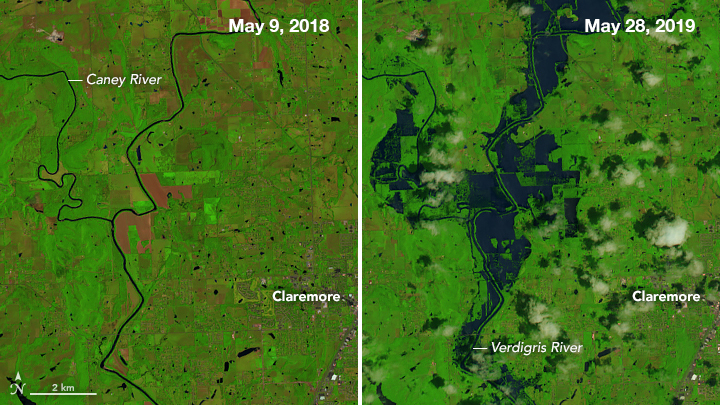
This pair of images shows the northeast side of Tulsa, Oklahoma, in May 2018 (left) and in May 2019 (right) after the Caney and Verdigris rivers flooded. Image credit: NASA/USGS | › Full image and caption
Temperatures, rainfall, droughts, high-intensity hurricanes and severe flooding events all are increasing and projected to continue as the world's climate warms, according to the National Climate Assessment. Weather is dynamic and various types of weather can interact to produce extreme outcomes. Here's how climate change can play a role in some of these weather extremes.
High Temperatures
This color-coded map displays a progression of changing global surface temperature anomalies from 1880 through 2018. Higher-than-normal temperatures are shown in red and lower-than-normal temperatures are shown in blue. The final frame represents the global temperatures five-year averaged from 2014 through 2018. Scale in degrees Celsius. Credit: NASA's Scientific Visualization Studio. Data provided by Robert B. Schmunk (NASA/GSFC GISS). | Watch on YouTube
Eighteen of the 19 warmest years on record have occurred since 2001. September 2019 tied as the hottest month on record for the planet. Since the 1880s, the average global surface temperature has risen about 2 degrees Fahrenheit (1 degree Celsius). As a result of warming temperatures, global average sea level has risen nearly 7 inches (178 millimeters) over the past 100 years. Data show this warming of the Earth system has been driven in large part by increased emissions into the atmosphere of carbon dioxide and other greenhouse gases created by human activities. And as temperatures continue to rise, we can expect more extreme weather.
Drought and Wildfires
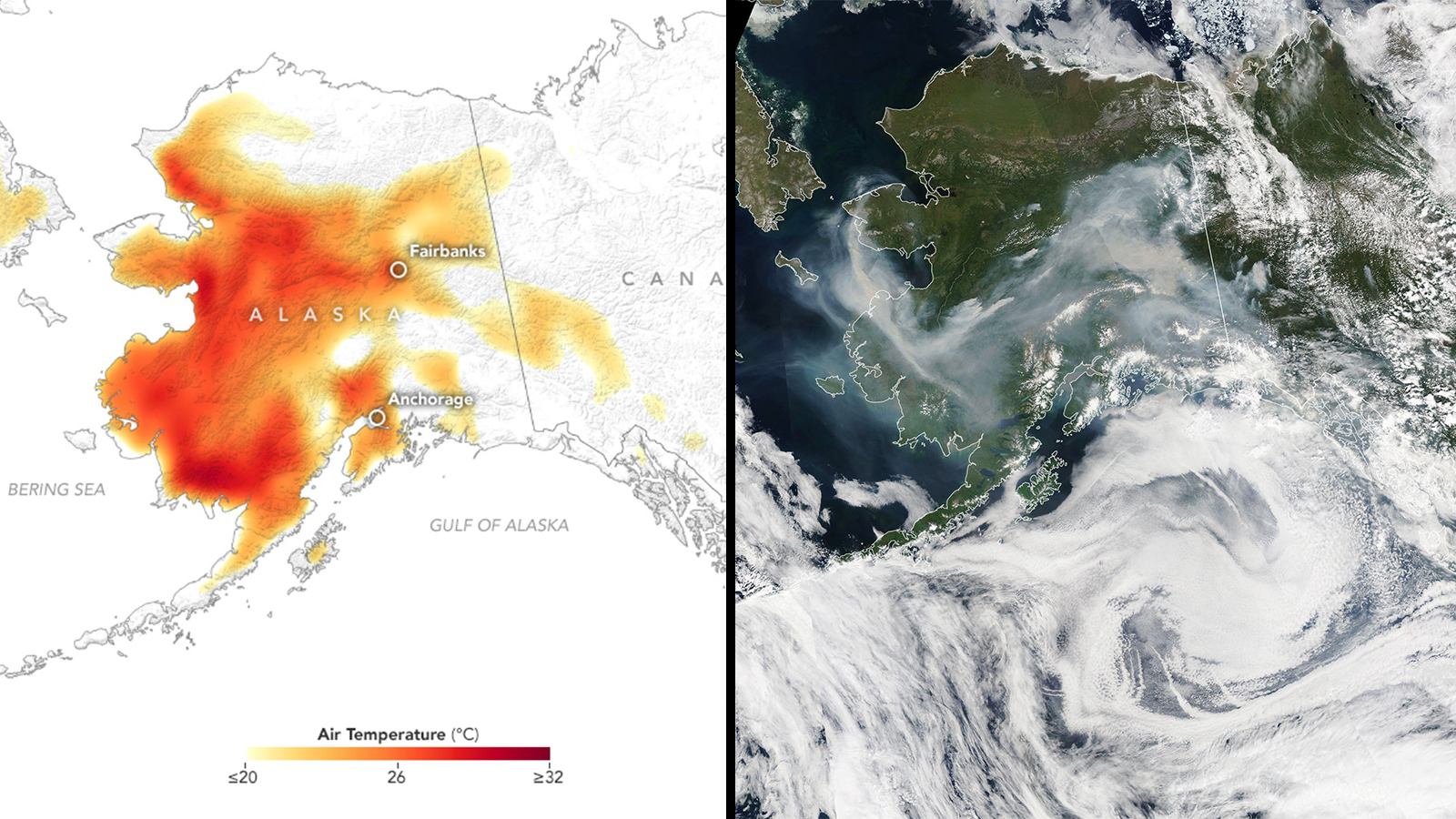
The image on the left shows air temperatures during a record-breaking June 2019 heat wave in Alaska. Around the same time, a cluster of lightning-triggered wildfires broke out in the same area. Smoke from the wildfires can be seen in the image on the right. Image credit: NASA | › Full image and caption
High temperatures alone can lead to drought. Drought can cause problems for humans, animals and crops dependent on water and can weaken trees, making them more susceptible to disease and insect attacks. High temperatures combined with low humidity, dry vegetation and hot, dry, fast winds typify what is known as "fire weather" or "fire season." During fire season, wildfires are more likely to start, spread rapidly and be difficult to extinguish.

The Operational Land Imager on the Landsat 8 satellite captured this image of the Walker Fire in Northern California on Sept. 8, 2019. Image credit: NASA/USGS | › Full image and caption
In California, where climate change has brought hotter, drier weather, residents are plagued by two fire seasons – one lasting from June through September that is primarily caused by high heat, low humidity and dry vegetation, and another lasting from October through April that is generally more volatile, as it is fueled by high winds. This 11-month fire season is longer than in past years. In recent years, California has also seen an increase in destructive wildfires. Weather extremes and climate change are partly to blame, even in relatively wet years. In California, these years mean more plant growth and potentially more fuel for fires when those plants dry out in the fall and the winds arrive. Wildfires have some fairly obvious effects on people and property. In addition to the visible destruction, smoke from wildfires can dramatically decrease air quality, pushing carbon into the air and destroying important carbon-sequestering plants and trees. Large-scale biomass destruction, as is happening in the Amazon rainforest, will have a lasting impact on important Earth processes.
Hurricanes

This image, acquired on October 11, 2019, by the Moderate Resolution Imaging Spectroradiometer, or MODIS, on NASA's Aqua satellite, shows Typhoon Hagibis as its outer cloud bands neared Japan. Image credit: NASA | › Full image and caption
Since the 1980s, regions of the world prone to hurricanes, cyclones and typhoons have witnessed an increase in intensity, frequency and duration of these destructive storms. All three are intense tropical storms that form over oceans. (The different names refer to where on Earth they occur.) They are all fueled by available heat energy from warm ocean water. Warmer oceans provide more energy to passing storms, meaning hurricanes can form more quickly and reach higher speeds. Typhoon Hagibis, which recently left a trail of destruction in Japan, was described as the worst storm to hit the region in decades. Growing unusually quickly from a tropical storm to a Category 5 storm in less than a day, Hagibis was so intense it was called a super typhoon. In 2018, the second strongest cyclone to hit a U.S. territory and the largest typhoon of the year, Super Typhoon Yutu, caused catastrophic destruction on the Mariana Islands, an archipelago in the North Pacific Ocean. More intense storms and rising sea levels make storm surge – ocean water that is pushed toward the shore by strong winds – even worse than in the past. Typhoons can wreak havoc on infrastructure and compromise fresh water reserves. It can take months or even years for a hard-hit region to recover.
Snowstorms

The MODIS instrument aboard NASA's Terra Satellite captured the low-pressure area near New England that brought heavy snows and thundersnow to the Mid-Atlantic and Northeastern U.S. in January 2011. Image credit: NASA Goddard/MODIS Rapid Response Team
Like any other weather event, extreme cold weather events such as blizzards and unusually heavy snowfall can be, but are not always, linked to climate change. Just as warmer ocean water increases the intensity of a warm tropical storm, warmer than average winter ocean temperatures in the Atlantic feed additional energy and moisture into cold storms, influencing the severity of snowfall once the storm comes ashore in the Eastern United States. There is some natural variability, such as the presence of El Niño conditions, that can also lead to severe snowstorms in the region. But natural variability isn't enough to fully explain the increase in major snowstorms in the U.S. In fact, the frequency of extreme snowstorms in the eastern two-thirds of the region has increased dramatically over the last century. Approximately twice as many extreme snowstorms occurred in the U.S. during the latter half of the 20th century as in the first half.
Why It's Important
Because of the risk to lives and property, monitoring the increasing number of extreme weather events is more important now than ever before. And a number of NASA satellites and airborne science instruments are doing just that.
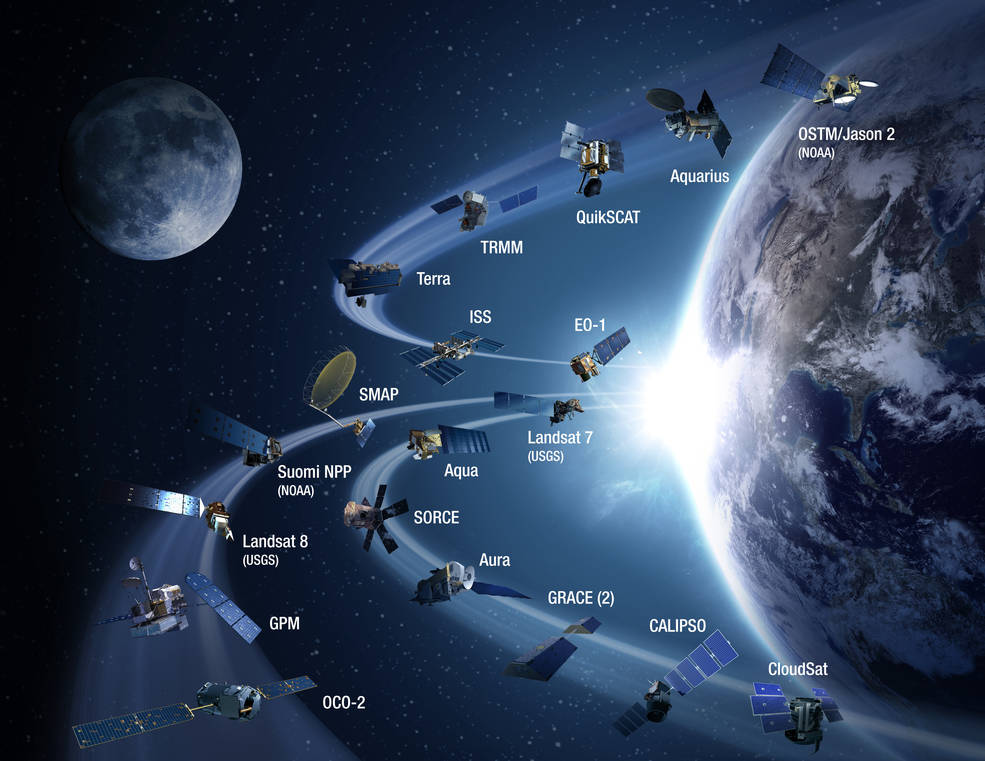
This graphic shows NASA's fleet of Earth-science satellites designed to monitor weather and climate across the globe. Image credit: NASA
A large global constellation of satellites, operated by NASA and NOAA, combined with a small fleet of planes operated by the U.S. Forest Service, help detect and map the extent, spread and impact of forest fires. As technology has advanced, so has the value of remote sensing, the science of scanning Earth from a distance using satellites and high-flying airplanes. Wildfire data from satellites and aircraft provide information that firefighters and command centers can use to call evacuation orders and make decisions about where to deploy crews to best arrest a fire's progress.
The agencies' satellites and airborne instruments also work in conjunction with those from international partners to provide data about hurricanes to decision makers at the National Hurricane Center, where predictions and warnings are issued so evacuations can be coordinated among the public and local authorities. Visible imagery from NASA satellites helps forecasters understand whether a storm is brewing or weakening based on changes to its structure. Other instruments on NASA satellites can measure sea surface characteristics, wind speeds, precipitation, and the height, thickness and inner structure of clouds.
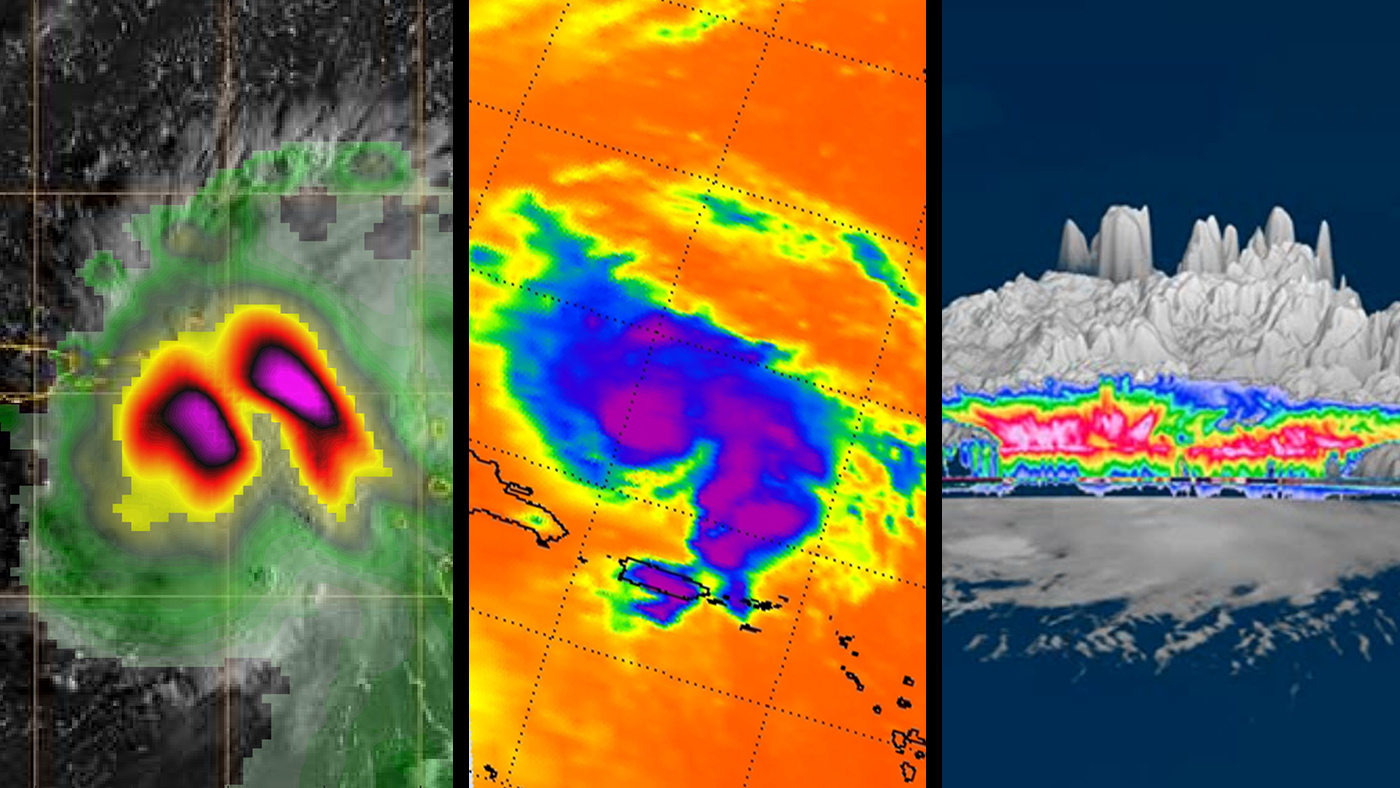
Three images of Hurricane Dorian, as seen by a trio of NASA's Earth-observing satellites in August 2019. The data sent by the spacecraft revealed in-depth views of the storm, including detailed heavy rain, cloud height and wind. Image credit: NASA/JPL-Caltech | › Full image and caption
NASA's airborne instruments, such as those aboard the Global Hawk aircraft, provide data from within the storm that cannot be otherwise obtained. Global Hawk can fly above a storm in a back-and-forth pattern and drop instruments called dropsondes through the storm. These instruments measure winds, temperature, pressure and humidity on their way to the surface. This detailed data can be used to characterize a storm, informing scientists of shifting patterns and potential future developments.
NASA missions will continue to study both weather and climate phenomena – whether they be droughts, floods, wildfires, hurricanes or other extremes – returning data for analysis. New airborne instruments aboard the satellite-simulating ER-2 and cloud-penetrating P-3 aircraft will fly missions starting in 2020 to study Atlantic coast-threatening snowstorms. Data from these flights will be combined with ground-based radar measurements and satellite measurements to better understand storms and their potential impact. Meanwhile, climate science instruments and satellites will continue to collect data that can inform everyone about the many aspects of our changing planet.
Teach It
Weather and climate data isn't just for meteorologists. Explore the resources and standards-aligned lessons below to get students analyzing local weather patterns, understanding wildfire monitoring and modeling global climate!
Precipitation and Clouds
-
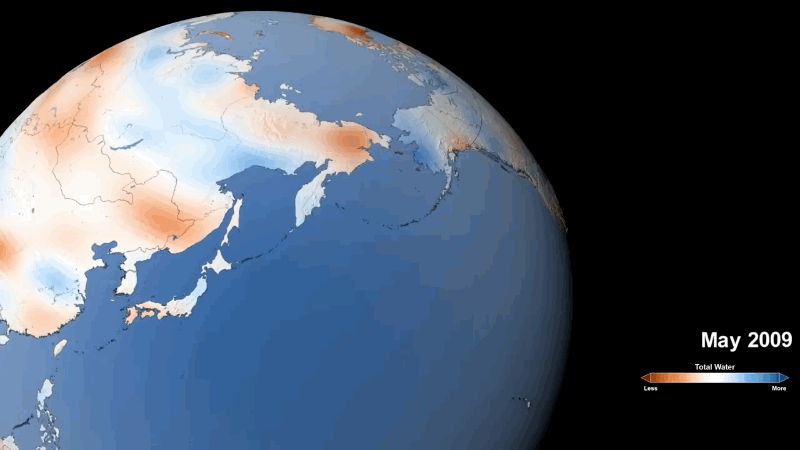
Teachable Moment: NASA Mission Gets the View on Earth’s Water Resources from Space
Explore the water cycle and its effects on communities through the lens of a NASA satellite designed to track the movement of water around the globe.
-

Precipitation Towers: Modeling Weather Data
This lesson uses stacking cubes as a way to graph precipitation data, comparing the precipitation averages and seasonal patterns for several locations.
Grades K-5
Time 30 mins - 1 hr
-

The Sky and Dichotomous Key
Students learn about cloud types to be able to predict inclement weather. They will then identify areas in the school affected by severe weather and develop a solution to ease the impacts of rain, wind, heat or sun.
Grades K-3
Time 30 mins - 1 hr
Wildfires and Temperature
-
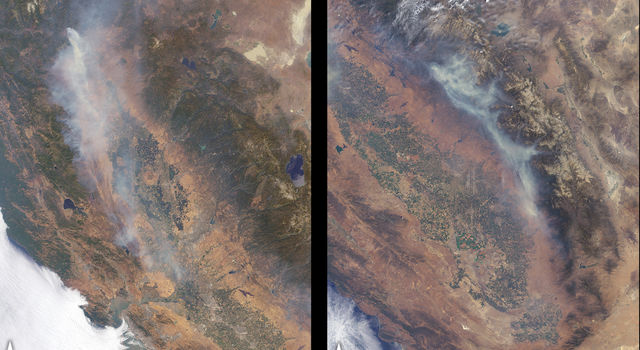
Teachable Moment: The Science of Wildfires
As wildfires burn over larger areas and longer portions of the year, NASA scientists are finding new ways to study their impacts on our climate and communities.
-
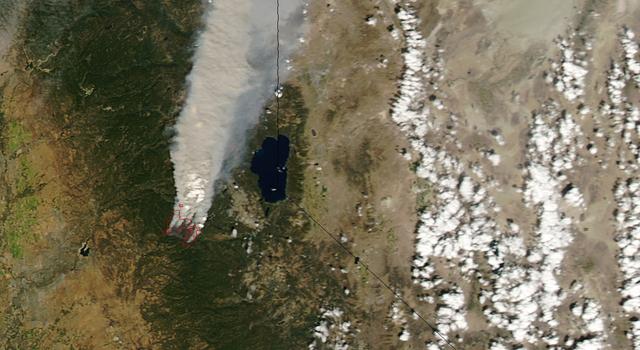
Fired Up Over Math: Studying Wildfires from Space
Students learn how scientists assess wildfires using remote sensing and solve related math problems, appropriate for various grade levels.
Grades 3-12
Time 30 mins - 1 hr
-
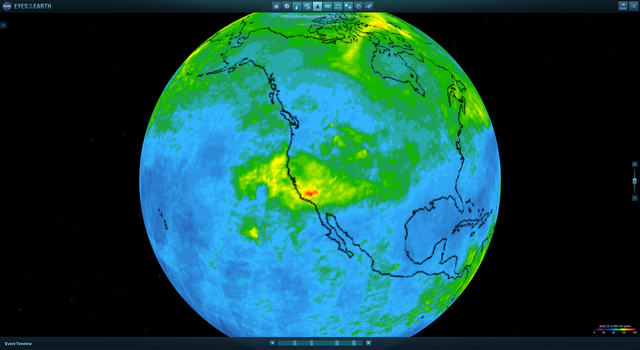
Pixels on Fire
Students use mobile devices and computers to learn about remote sensing and satellite data to determine when and where wildfires have started.
Grades 4-8
Time 30 mins - 1 hr
-

Graphing Global Temperature Trends
Students use global temperature data to create models and compare short-term trends to long-term trends.
Grades 5-12
Time 1-2 hrs
Sea Level
-

Teachable Moment: The Science of Earth's Rising Seas
How do we know sea-level rise is happening and what’s causing it? Learn about the NASA satellites studying the problem and get students exploring the data through math.
-
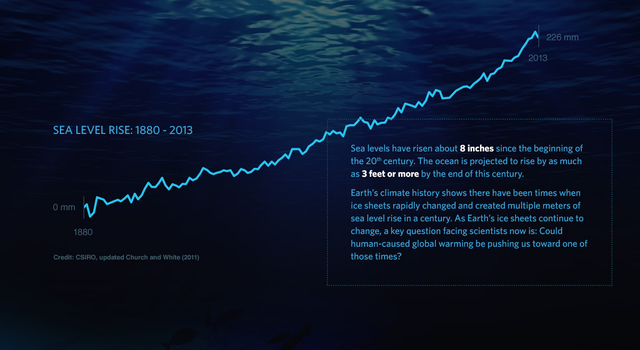
Graphing Sea-Level Trends
In this activity, students will use sea-level rise data to create models and compare short-term trends to long-term trends. They will then determine whether sea-level rise is occurring based on the data.
Grades 5-12
Time 1-2 hrs
Satellites and Data
-
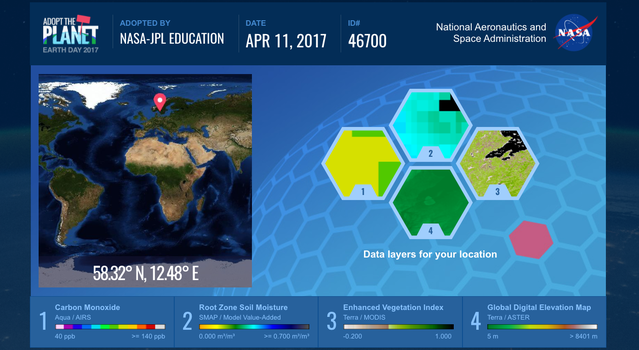
Teachable Moment: Celebrate Earth Day with NASA Science Data
NASA uses a fleet of satellites and science instruments to study our changing climate. Here’s how students can use that NASA data to do Earth science of their own.
-

How to Read a Heat Map
Students learn to read, interpret and compare “heat map” representations of Earth science data.
Grades 4-12
Time 30 mins - 1 hr
-

Build a Satellite
Students will use the engineering design process to design, build, test and improve a model satellite intended to investigate the surface of a planet.
Grades 5-8
Time > 2 hrs
Climate
For Students
-

The Change of Seasons: Views from Space
See how seasonal changes affect our planet.
Type Slideshow
Subject Earth Science
-
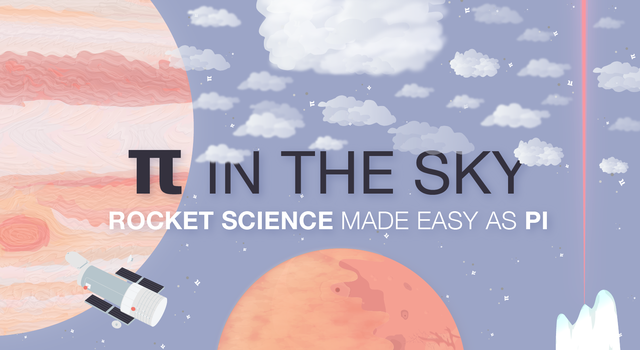
Take the Pi in the Sky Challenge
Can you use pi to solve these stellar math problems faced by NASA scientists and engineers?
Type Slideshow
Subject Math
-

Make a Cloud in a Bottle
Have you ever wondered how clouds form? In this activity, you can make your own cloud to see for yourself!
Type Project
Subject Earth Science
-

NASA's Earth Minute
Learn how NASA studies Earth's weather and climate in these one minute videos!
Type Video Series
Subject Earth Science
Explore More
- Hurricanes as Heat Engines Story Map Lesson
- NOAA Educator Resources
- Article: "The Impact of Climate Change on Natural Disasters"
- NASA Earth Observatory - Atmosphere
- NASA Earth Observatory - Natural Event
- Interactive: NASA Eyes
Resources for Students
TAGS: Earth, Earth science, climate change, weather, extreme weather, hurricane, wildfire, typhoons, drought, flood, sea level rise, Climate TM
Meet JPL Interns | May 16, 2019
The Weather on Mars Has This Soon-to-Be NASA/JPL Intern's Head in the Clouds
Brittney Cooper loves studying weather – and she's taking that passion all the way to Mars. A graduate student at York University in Toronto, Cooper has spent the past two years working with the science team for NASA's Mars rover Curiosity. In January, she authored her first science paper on a study she designed with the Curiosity team that looked at how clouds scatter light and what that tells us about the shapes of their ice crystals. Despite her involvement in the Curiosity mission, the Canada native has never actually been to a NASA center. But that's about to change this summer when she'll embark on her first internship at JPL in Pasadena, California. We caught up with Cooper to find out what she's looking forward to most about her internship and how she's planning to take her studies of Martian clouds even farther.
You're currently earning your master's at York University in Toronto. What are you studying and what got you interested in that field?
I'm doing my master's in Earth and space science. But if you really want an interesting story [laughs] … I've always been interested in astronomy, space and science, but I also really love art. Coming to the end of high school, I realized that maybe it was going to be too hard for me to pursue science. Maybe I was a little scared and I didn't really think I was going to be able to do it. So I went to university for photography for two years. After two years, I realized photography wasn't challenging me in the right ways and wasn't what I wanted to do for the rest of my life. So I left. I did night school to get credits for calculus and all the grade-12 physics and chemistry that I needed to pursue a degree in atmospheric science, which is not even remotely astronomy, but I've also always loved weather – pretty much anything in the sky. I still had a passion for astronomy, so I started volunteering at the Allan I. Carswell observatory at York. There, I met a professor who I ended up doing research with for many years. He told me, "There's the field called planetary science, where you can study the atmospheres of other planets and you can kind of marry those two fields that you're interested in [astronomy and atmospheric science]." So I ended up adding an astronomy major.
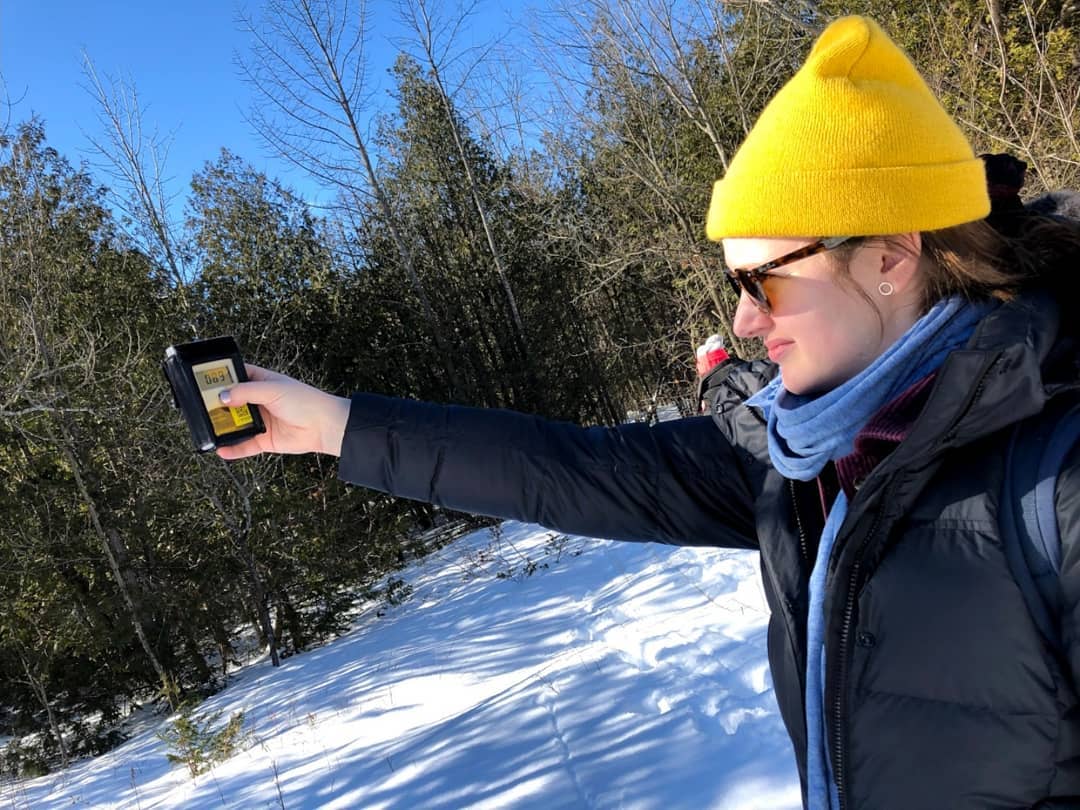
Cooper measures the downward flux of solar radiation during a winter snow survey. Image courtesy Brittney Cooper | + Expand image
In January you authored your first science paper on that research. Tell me more about that.
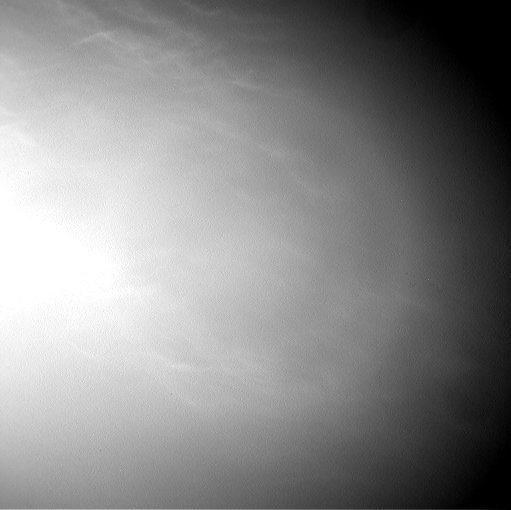
Wispy clouds float across the Martian sky in this accelerated sequence of images from NASA's Curiosity Mars rover. Image credit: NASA/JPL-Caltech/York University | › Full image and caption
My research focuses on the physical scattering properties of Martian water-ice clouds. A lot of people don't even realize that there are clouds on Mars, which I totally get because Mars doesn't have much of an atmosphere. But it does have enough of an atmosphere to create very thin, wispy, almost cirrus-like clouds similar to the ones we have on Earth. They're made up of small, water-ice crystals. These kinds of clouds do have a noticeable impact on Earth's climate, so we have now started thinking about what these clouds are doing in Mars' climate. The scattering properties can tell us a bit about that. They can tell us how much radiation is scattered back to space by these clouds or kept in Mars' atmosphere and whether or not we can see really fun things like halos, glories and different types of optical phenomena that we can see here on Earth.
We designed this observation that uses the Navcam imager on Curiosity. The engineering folks with the mission helped us design it. I got to present at a science discussion, which was superscary, but everyone was so kind. And then the observation was approved to run on Mars once a week from September 2017 to March 2018. During this observation window, Curiosity would take images of the sky to capture clouds at as many different scattering angles as possible. Once we got all the data back, we were able to constrain the dominant ice crystal shapes in the clouds based upon this thing called the phase function, which tells you how these clouds scatter light and radiation. I was the lead author on the research paper that came from that, and it got accepted. We started working on this right when I was really new to the mission, and it was my first paper. I couldn't believe everyone wasn't, like, "Who the heck are you? Why are we going to let you do anything?" But everyone was so kind, and it was just such a great experience.
What was the hardest part about writing that first paper?
The hardest part was probably just getting over the fear of thinking people aren't going to listen to you or you aren't going to be smart enough or you won't be able to answer questions. It was really just getting over my own fears and worries and not holding myself back because of them. I have a really great mentor who pushed me to do all these things, so I was able to suck it up and say, "If he believes in me and he thinks I can do it, maybe he's right." Every time I did a presentation or I would talk about the observation or try to advocate for it, I was just met with such positivity that I was, like, "OK, these fears are rooted in nothing."
In July, you're coming to JPL for your first internship here. What will you be working on?
Yes, I'm so excited! I'll be working with two scientists, Michael Mischna and Manuel de la Torre Juarez. We're going to be working with the Rover Environmental Monitoring Station, or REMS, which is an instrument on Curiosity that measures the temperature, relative humidity and pressure around the rover on Mars. From those measurements, we're going to try to infer the presence of clouds at night. So far, the way we've used Curiosity to study clouds is with optical instruments [or cameras]. So we take pictures of the clouds. But that's not really something we can do at night. So using REMS and its temperature sensors at night, we can try to see if clouds around the rover are emitting infrared radiation, heating up the atmosphere around the rover. We can try to detect them that way. So that's what we're going to try to do – look for some patterns and see what we can come up with. We'll also be comparing what we find with data from NASA's Mars Climate Sounder, which is in orbit around Mars and takes nighttime measurements of the atmosphere.
What are you most excited about coming to JPL?
I would be lying if I said it wasn't just getting to come to a NASA center – especially as a Canadian. It's every little space enthusiast's dream. I'm also excited to meet all the people who I've been working with for the last two years. The people are such an awesome part of this mission that I've been a part of. So I'm looking forward to meeting them in person and working with them in a closer way.
What do you see as the ultimate goal of your research?
We're just trying to better understand Mars. It's kind of a crazy place. There is a lot of evidence that shows us that there's a lot more going on than we know now and it's just about trying to put the pieces of the puzzle together. There are also a lot of similarities to Earth. So we can try to take what we learn about Mars and apply it to our planet as well.
What's your ultimate career goal?
What I would really love is to work in spacecraft operations. I absolutely love working in science and working with data, but getting a chance to be a part of this mission and do operations – be part of a team and do multidisciplinary work – it's so exciting, and it's something that I never thought that I'd get to experience. And now that I've had a bit of a taste, I'm wanting more. So that's what I'm hoping for in the future.
Do you ever think about how you moved away from studying photography but are using photography to do science on Mars?
Yes! Every once in a while, that hits me, and I think to myself, "That's so cool." It's just very, very cool. Ten years ago, I never thought I'd be where I am now. But also just to know that there's that connection, that I'm working with visual data, with optical data – I don't think it's a coincidence. I really love working with images, so I think it's pretty cool that I get to do that.
Just one last fun question: If you could travel to any place in space, where would you go and what would you do there?
Without a doubt, it would have to be [Saturn's moon] Titan. I actually would probably go there to study the atmosphere. The first research project that I ever did was trying to find methane and ethane fog on Titan and the surface data was quite limited, so I would like to go there. I want to see water-ice rocks. I want to see methane lakes and methane rain, set up a little vacation spot there [laughs].
Explore JPL’s summer and year-round internship programs and apply at: https://www.jpl.nasa.gov/edu/intern
The laboratory’s STEM internship and fellowship programs are managed by the JPL Education Office. Extending the NASA Office of STEM Engagement’s reach, JPL Education seeks to create the next generation of scientists, engineers, technologists and space explorers by supporting educators and bringing the excitement of NASA missions and science to learners of all ages.
TAGS: Higher Education, College, Internships, Interns, Students, Science, Mars, Rovers, Weather, Women at NASA




